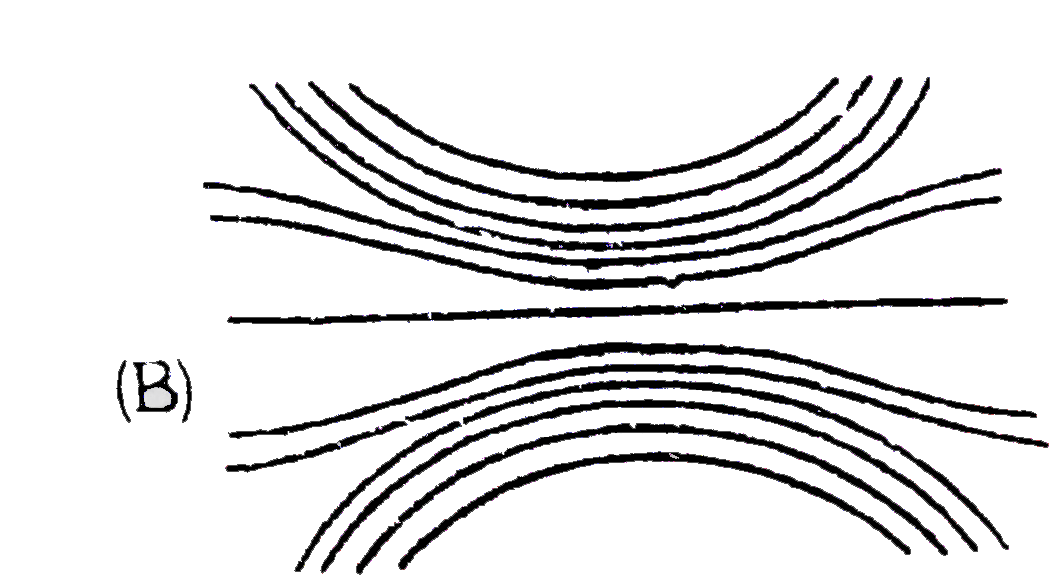The diagram shows the electric field lines produced by an electrostalic focusing device.

Which one of the following diagrams best shows the corresponding equipotential lines? The electric field are shown as broken lines on each of the diagrams.




The correct Answer is:C
Equipotential lines are perpendicular to electric field lines.
Topper's Solved these Questions
- BOOK - ALLENCHAPTER - MISCELLANEOUSEXERCISE - Exersice-037videos
MISCELLANEOUS
- BOOK - ALLENCHAPTER - MISCELLANEOUSEXERCISE - ASSERTION-REASON18videos
MISCELLANEOUS
- BOOK - ALLENCHAPTER - MISCELLANEOUSEXERCISE - Part -II Example Some worked out Examples1videos
MISCELLANEOUS
- BOOK - ALLENCHAPTER - KINEMATICS (MOTION ALONG A STRAIGHT LINE AND MOTION IN A PLANE)EXERCISE - BEGINNER S BOX-78videos
KINEMATICS (MOTION ALONG A STRAIGHT LINE AND MOTION IN A PLANE)
- BOOK - ALLENCHAPTER - PHYSICAL WORLD, UNITS AND DIMENSIONS & ERRORS IN MEASUREMENT EXERCISE - EXERCISE-IV8videos
PHYSICAL WORLD, UNITS AND DIMENSIONS & ERRORS IN MEASUREMENT
Similar Questions
Knowledge Check
- Question 1 - Select One
Electric field lines provide information about
Afield strengthBdirectionCnature of chargeDall of these
Figure shows electric field lines in which an electric dipole p is placed as shown. Which of the following statements is correct ?
 View Solution
View SolutionFigure shows electric field lines in which an electric dipole →P is placed as shown. Which of the following statements is correct?
 View Solution
View SolutionFigure shows electric field lines in which an electric dipole p is placed as shown. Which of the following statements is correct ?
 View Solution
View SolutionWhy do the electric field lines never cross each other ?
View SolutionThe figure shows some of the electric field lines corresponding to an electric field. The figure suggests
 View Solution
View SolutionWhich of the following is true for the figure showing electric lines of force ? (E is electrical field, and V is potential).
 .View Solution
.View SolutionFigure shows the electric field lines around an electric dipole. Which of the arrows best represents the electric field at point P ?
 View Solution
View Solution


